 October 16, 2014 John E. Ross, KD8IDJ, Editor
| |||||||||||
As Gonzalo Hits Category 4, Hurricane Watch Net Plans Extended Activation The Hurricane Watch Net (HWN) continued to keep close watch on Hurricane Gonzalo this week, especially after the storm strengthened considerably and was poised for a near-direct hit on Bermuda. The Net activated for several hours on October 13 and early on October 14, when the storm threatened the US and British Virgin Islands and the northern Leeward Islands but stood down after Gonzalo took an abrupt turn to the north.
"The people of Bermuda are still picking up from damage caused by Tropical Storm Fay, which did make direct landfall this past Sunday morning," Graves pointed out. "I've already been in contact with a few hams on Bermuda, and antennas that weren't destroyed by Fay are being taken down and being secured. In order to get on the air, they have constructed 20 meter dipoles, either as an outside NVIS antenna or attic antenna." As of 1800 UTC on October 16, the storm was 460 miles south-southwest of Bermuda, moving at 7 MPH and packing maximum sustained winds of 145 MPH. "Interests in Bermuda should be rushing their preparations to completion," the National Hurricane Center in Miami has advised. The Net has announced plans to activate October 16 at 2100 UTC and remain in continuous activation until sometime Saturday, October 18. Throughout this event, the net will operate on 14.325 during the day, shifting to 7.268 MHz at 0100 UTC, and returning to 14.325 MHz at 1000 UTC. The Net's plans are subject to change. "We will be collecting surface observations and reporting them directly to the National Hurricane Center (NHC)," Graves said. "We will also be available to provide backup communications for emergency operation centers, emergency management agencies, non-governmental organizations, and other vital interests." Graves said any hurricane preparation or response could also involve cooperating with military relief operations. "Amateur stations in the affected area should be aware of the storm, and be prepared to operate from a place of safety," Graves continued, expressing the Net's appreciation for a clear frequency and for assisting with relays. The Net's primary goals are to issue storm advisory information on a regular basis to those in the affected area of the forecast path of the storm. It also will be requesting measured/observed ground-truth data from those in the affected area. More information on Hurricane Gonzalo and the Hurricane Watch Net is on the HWN website. ARES Volunteers Stand Ready as Tropical Storm Ana Aims for Hawaii Amateur Radio Emergency Service (ARES) volunteers in Hawaii are on alert for possible activation as Tropical Storm Ana, which is forecast to become a Category 1 hurricane, bears down on the Hawaiian Islands. As of 1200 UTC on October 16, Ana was 740 miles southeast of Honolulu and moving at about 10 MPH with maximum sustained winds of 60 MPH. The storm is expected to reach the islands on Saturday. ARRL Pacific Section Manager Bob Schneider, AH6J, said he attended an informational meeting at Hawaii County Civil Defense on Wednesday and will attend another Thursday.
"All beaches, parks and schools are closed starting Friday, including Hawaii Volcano National Park," Schneider told ARRL Headquarters. He said he expected to deploy Ham Aid equipment kits to several schools. The Ham Aid kits -- sent in September from ARRL as a lava flow was threatening communities on the Big Island -- include HF gear as well as VHF and UHF equipment. Schneider also cancelled two ARRL-sanctioned ham radio gatherings scheduled for Saturday -- one on the Big Island and the other on Oahu. "We are in tropical storm watch and expect to upgrade that Friday morning to a hurricane watch," Schneider said. "A hurricane warning may also go up soon. The storm is wandering a little. I still expect it to become a Cat 1 hurricane with very heavy waves on the northeastern quadrant. I heard the mayor instruct the Kona people to be sure and get the surfers out of the water as he expected the Kailua-Kona beaches to be hit hardest." The National Weather Service Central Pacific Hurricane Center anticipates that the first significant swells from Ana will arrive late on Thursday, and large, potentially damaging surf will follow the next day. The Hawaii County Civil Defense Agency was advising residents of Punalu'u, Kalapana, Pohoiki, and Kapoho to take precautions and move to higher ground. The NWS has issued a flash flood watch for Hawaii Island from noon Friday through 6 PM Sunday, with forecasts of 10 to 15 inches of rain, and locally up to 20 inches along southeast-facing slopes. The heavy rain raises the possibility of landslides in areas of steep terrain. ARRL Executive Committee Adopts Mobile Amateur Radio Operation Policy The ARRL Executive Committee has adopted an updated Policy Statement on Amateur Radio mobile operation. While agreeing that driver inattention is a leading cause of auto accidents and that concern over driver distraction "is not unreasonable," the policy cites Amateur Radio's 70-year history of two-way mobile operation as evidence that such radio use does not contribute to driver inattention. The policy points out that Amateur Radio operation differs from cell phone communication, in part because the device need not be held to the face to listen, no text messaging is involved, and mobile ham operators only need to pick up a microphone to make "brief and infrequent" transmissions.
Many states already have statutes in place that restrict the use of cell phones and other communication devices to a greater or lesser degree, and several exempt Amateur Radio. A lot of these laws predate MAP-21, however, and because MAP-21 permits no specific exception for Amateur Radio operation, some may need to be revised in order to comply with its requirements. The ARRL is urging states or localities to adopt motor vehicle codes that narrowly define the class of regulated devices, in order to exclude Amateur Radio specifically. "Given the necessity of unrestricted mobile Amateur Radio communications in order for the benefits of Amateur Radio to the public to continue to be realized, ARRL urges state and municipal legislators considering restrictions on mobile cellular telephone operation and mobile text messaging to narrowly define the class of devices included in the regulation, so that the class includes only full-duplex wireless telephones and related hand-held or portable equipment," the League policy recommends. The ARRL policy suggests statutory language for state and local motor vehicle codes that defines a "personal wireless communications device" as one through which "commercial mobile services, unlicensed wireless services, and common carrier wireless exchange access services are transmitted." This would include such devices as cell phones and anything used for text messaging or paging, but the suggested wording specifically excludes "two-way radio communications equipment, such as that used in the Amateur Radio Service." For states or localities considering banning all but hands-free cell phone use, the ARRL recommended wording that would prohibit the use of a personal wireless communications device "in any manner" while driving, unless the motorist is using hands-free capability. The suggested statutory language would not apply to anyone using the device while the vehicle is parked or "to contact or receive calls from an emergency response vehicle or agency." ARRL CEO David Sumner, K1ZZ, addressed the issue in his November 2013 QST "It Seems to Us" editorial, "Distracted Driving Legislation: Proceed with Caution." Read more. W1AW Centennial Operations are West Virginia and Nevada Bound The ARRL Centennial W1AW portable operations taking place throughout 2014 from each of the 50 states are now in Alabama and Michigan. They will transition at 0000 UTC on Wednesday, October 22 (the evening of October 21 in US time zones), to West Virginia (W1AW/8) and Nevada (W1AW/7). W1AW/KH0 also will be active until October 21 from Tinian Island in the Northern Marianas. So far during 2014, W1AW has visited each of the 50 states for at least 1 week, and by year's end W1AW will have been on the air from every state at least twice.
Working W1AW/x from each state is worth 5 points per mode/contact, even when working the same state during its second week of activity. To earn the "Worked all States with W1AW Award," work W1AW operating portable from all 50 states. (Working W1AW or W100AW in Connecticut does not count for Connecticut. Participants must work W1AW/1 in Connecticut.) A W1AW WAS certificate and plaque will be available. An ARRL Centennial QSO Party leader board shows participants how many points they have accumulated in the Centennial QSO Party and in the W1AW WAS operations. Log in using your Logbook of The World (LoTW) user name and password, and your position will appear at the top of the leader boards. Results are updated daily, based on contacts entered into LoTW. Young Ham Recognized for Navigation Aid for Visually Impaired A young radio amateur from California is one of nine Popular Mechanics "Future Breakthrough Award" winners. Shiloh Curtis, KK6ISM, developed a "hat-based, hands-free, haptic navigational aid for visually impaired individuals." As the publication explained, after a friend from her school's robotics club described going blind as losing "two eyes and one hand," Curtis determined to come up with a way to free up the hand that would be wielding the classic white cane. Robotics was the key.
"A robot is blind until you put sensors on it," she told Popular Mechanics. "Why don't we put sensors on the blind, so they can navigate like robots?" She combined a wide-brimmed hat, vibrating motors, and a robot vacuum cleaner's laser distance sensor to come up with the wearable device that warns the wearer of obstacles through vibrations. Shiloh Curtis is a junior at Laughing Thunder Academy in Sunnyvale, California. She has been recognized as the winner of California State Fair "Project of the Year" and was an Americas Regional finalist in the Google Science Fair. She is the daughter of Dave Curtis, N6NZ. -- Thanks to Ward Silver, N0AX, and Bob Wilson, N6TV School Club Roundup is Coming to Town! Is it the ARRL November Sweepstakes that kicks off the ARRL's fall HF contest season? No! School Club Roundup (SCR) leads the parade, warming up students across the land. By this time, fall quarter or semester is well underway, and clubs are at full throttle. October
typically exhibits good fall propagation, and clubs should find it easy to make contacts across the continent and around the world, even with a modest station. Unlike most contests, this one takes place through the week, beginning at 1300 UTC on October 20 and running through October 24 at 2359 UTC. Stations may operate for a maximum of 24 hours through the entire contest and are limited to 6 hours of operation during any single 24-hour period. Participation is simple, and there's a home for everybody. There are five categories of club entries: Elementary/Primary, Middle/Intermediate/Junior High School, Senior High School, College/University Club, and Non-School Club. There is also an Individual category. If you just want to get on the air and hand out contacts, enter in the Individual category. Any mode -- SSB, CW, or digital -- is okay. Tune around and listen for SCR stations calling CQ, or do it yourself and see who answers (call "CQ School Clubs," if you aren't a club station). Once you make a contact, exchange a signal report, category (School, Club, or Individual), and your state, province, or DXCC entity. After the contest is over, submit your log online (preferred) or by paper.
The most popular time for younger students is during the after-school hours, but the older students may be on the air at any time. All groups are limited to one transmitter on the air. By no means do the older students automatically win. The February SCR results were a shootout with the K1BBS Burr and Burton ARC high school team prevailing over all challengers, edging out the K5LMS Lampasas Middle School Youth ARC. The School Club Roundup is co-sponsored by the ARRL and the Long Island Mobile Amateur Radio Club (LIMARC), and results appear in QST as well as online. Bruce Horn, WA7BNM, has created a web entry service that accepts scores and logs. Paper logs and summary sheets are still available, but participants might want to try the logging program SCR-LOG, which is written especially for the School Club Roundup. Other logging program choices are listed on the SCR website. Once the contest is over, browse to the WA7BNM web service and upload your log. As soon as the log deadline passes on November 8, the web service automatically sorts and displays all claimed scores. Logs are reviewed by the LIMARC team, and final results are posted afterward. Certificates will be generated at the same time for downloading and printing. While you're at it, upload some photos of your school team in action to the ARRL Soapbox to show off your team members. -- Thanks to Ward Silver, N0AX AMSAT Offering Fox Satellite Collectable Coin as Donation Premium AMSAT has announced that it's making available a collectable "challenge coin" for qualifying donations to the Fox satellite program. AMSAT commissioned the coin for those contributing at least $100 to the campaign.
The Fox program is designed to provide a platform for university experiments in space, as well as provide FM repeater capability for radio amateurs worldwide. Fox-1A and 1C are set to launch in 2015, and Fox-1B -- also known as RadFXSat -- is awaiting NASA ELaNa launch assignment. Donations to the Fox satellite program may be made via the AMSAT website, the FundRazr crowdsourcing app, or via the AMSAT office, (888) 322-6728. -- AMSAT News Service via Drew Glasbrenner, KO4MA Radio Amateurs in India Fill Communication Gaps in Cyclone's Wake Authorities in India called on Amateur Radio volunteers to help as powerful Cyclone (hurricane) Hudhud was poised to sweep into Bay of Bengal coastal areas of India in the state of Andhra Pradesh over the October 11-12 weekend. According to media reports, upward of 50 people have died as a result of the storm, which generated heavy rains and flooding. Winds upward of 130 MPH uprooted trees, downed utility lines, and cut off conventional telecommunication systems. Hardest hit was the city of Visakhapatnam, also known as "Vizag." Infrastructure is still being restored.
"It will take about 5 to 6 days before life returns to normal. Crews are repairing power lines, telephones and other infrastructure," said Jayu Bhide, VU2JAU, the Amateur Radio Society of India National Disaster Communication Coordinator. "There was no water, petrol pumps were out of action, and airports closed." More than 40 National Disaster Response Force teams have been engaged in rescue efforts, along with the navy and dozens of divers. Thousands of residents were evacuated to shelters in advance of the storm. The government has been airlifting food and supplies into affected areas. The storm made landfall in the same general area struck last year by Cyclone Phailin. Bhide reported that Preeti Mekap, VU3UFX; Rajesh Kumar, VU3PLP, and Sameer Ranjan Panda, VU2AOR, were active from the Bhuvaneshwar area. In the Sambalpur area Dilip Padhi, VU2DPI, was working with Santanu Panigrahi, VU2SIC, and Pawan Agrawal, VU2PGU. In the Andhra coastal area, volunteers from the National Institute of Amateur Radio were reported to be handling emergency communication. On October 14 Indian TV5 News featured radio amateurs involved with the Cyclone Hudhud response. -- Thanks to Jim Linton, VK3PC, IARU Region 3 Disaster Communications Committee chair IARU Region 1 Proposal Could Expand List of Countries with 70 MHz Allocations A proposal has been adopted to modify the European Common Frequency Allocation (ECA) table to allocate 69.9 to 70.5 MHz on a secondary basis to the Amateur Service. International Amateur Radio Union Region 1 (IARU-R1 -- Europe, Middle East, and Africa) and five IARU R1 countries submitted the proposal to a meeting of the European Conference of Postal and Telecommunications Administrations (CEPT) European Communications Committee (ECC) Frequency Management Working Group, October 6-10 in France. Efforts to place an allocation at 70 MHz in the ECA table have been underway since the 1990s.
More than 30 CEPT administrations, including the UK, allow national amateur use on all or part of the 4 meter band, but others have indicated that they require a clear regulatory decision before opening the band to secondary Amateur Radio usage. The proposal would amend the ECA table to include a secondary allocation for Amateur Radio at 69.9 - 70.5 MHz and update existing footnote EU9 to state that CEPT administrations may allocate all or parts of the band to the Amateur Service. The proposal received the support of more than 10 administrations, with only three countries opposed. Fourteen CEPT administrations have already notified of such usage in the European Communications Office Frequency Information System, and the working group agreed to include the allocation change in the next revision of the ECA table. The band will not become immediately available in all CEPT countries, however, as the ECA table is not binding on CEPT national regulatory authorities. Read more. -- Thanks to IARU Region 1 via David Court, EI3IO National Wildlife Refuge Week Special Events Set for October 14-20 Amateur Radio operators will be on the air October 14-20 to let the public know about the National Wildlife Refuge System by operating from refuges around the US during National Wildlife Refuge Week.
They will be highlighting refuge features, wildlife, and geography while contacting other stations across the US and North America. The goal for participants is to combine their communication skills with their enjoyment of the outdoors to help others learn about the National Wildlife Refuge System. Authorized, safe, responsible access to refuges is sanctioned by this event. As of 2013, hams also may operate from wildlife refuges, areas or preserves managed by any state, territory, or Canadian province. A list of National Wildlife Refuge sites by state is available. Contact the NWR Week Amateur Radio coordinator. Read more. Celebration of First Great Britain-New Zealand Contact Highlights Interesting History If you've heard "2SZ" on the HF bands, it's not a pirate. The call sign is part of a special event to mark the 90th anniversary of the first Amateur Radio contact between Great Britain and New Zealand in
1924. The radio operator in England was 18-year-old Cecil Goyder, operating the Mill Hill School station 2SZ. The Radio Society of Great Britain, in partnership with groups of amateurs in the UK and New Zealand, invited participation in the celebration by recreating that original contact between the UK and New Zealand on 80 meters, and a lot of the activity has concentrated on that band when propagation has been favorable. The 2SZ call sign joined special event station GB2NZ, operated by various groups, in the celebration, which wraps up in the UK on October 18, the actual anniversary date.
On the New Zealand end of the circuit, ZM90DX and ZL4AA are on the air, with many individual ZL stations also participating. ZM90DX will be active until October 31. Kiwi sheep farmer Frank Bell, Z4AA, a World War I veteran, was the other operator for the historic October 18, 1924 contact. Amateur Radio had only been authorized a year earlier in New Zealand, and Bell already had set some distance records. These included a September 21, 1924, contact with U6BCP in California, and an October 13, 1924, contact with U1SF in Connecticut. In later years, Goyder emigrated to the US, where he served as the first communications officer for the United Nations. As for Bell, after being elected in absentia to the executive committee of the new International Amateur Radio Union in 1925, he apparently lost interest in radio. His sister Brenda took over Z4AA to become New Zealand's first female Amateur Radio operator and was the first New Zealand ham to contact South Africa in 1927. She later became a radio broadcaster. Amateur Radio Author William E. "Bill" Sabin, W0IYH, SK Noted Amateur Radio author Bill Sabin, W0IYH, of Cedar Rapids, Iowa, died October 13. He was 88. An ARRL member, Sabin was the author of Discrete-Signal Analysis and Design. He also was co-editor (with E.O. Schoenike) and contributor to three books on single-sideband and HF radio, and he contributed to ARRL's RF Amplifier Classics. In addition, Sabin wrote more than 40 technical articles, including articles for QST and QEX, as well as portions of The ARRL Handbook between 1985 and 2012. In 1983 he received the ARRL Technical Excellence Award.
Sabin was licensed in 1941 as W9YFA (later W4YFA), when he was 15 and living in Covington, Kentucky, where he was born. He served as a US Navy radio operator during World War II. During a post-war stint as a radio and TV repairman, Sabin began taking math and engineering classes at the University of Cincinnati, and in 1955 he went to work for General Electric as an engineering assistant (and later as a specialist). In 1963 he became a registered professional engineer in the State of Ohio. When he moved to Iowa in 1964 to work for Collins Radio Company as an engineer, he became W0IYH. In 1973, he received his BS in electrical engineering from the University of Iowa. A master's degree in EE from the same institution followed in 1976. He retired from Rockwell Collins Company in 1990. Sabin was a Life Senior Member of the IEEE. An active operator, he was a member of the ARRL DXCC Honor Roll. Survivors include his wife, Ellen. Services were October 16 in Cedar Rapids. A Century of Amateur Radio and the ARRL The October 1990 QST reported on the 3Y5X Bouvet Island DXpedition of 1989-1990. This $330,000 venture -- funded by the participants and by donations from hams around the world -- produced nearly 50,000 contacts on all HF bands on SSB, CW, and RTTY.
Marking the 75th anniversary of QST, the magazine's December 1990 issue published an overview of those 75 years, written by WJ1Z. The article noted that at the time the first issue of QST was published, the League's membership was 635. On October 28, 1990, W5UN worked his 100th country via EME (moonbounce). Not content to rest on his laurels, by November 4 he was up to 104 countries. Dave might have made EME DXCC earlier, had it not been for a tornado that wrecked his first 32 dBi-gain moonbounce array. The FCC instituted the new "codeless" Technician license on Valentine's Day 1991. Within the first two weeks, 313 people had applied, and the first such license was issued to N3IFY. An interesting airplane accident story was published in March 1991 QST. Gary, V31KX, was aboard a flight in Belize that went down on November 14, 1990. After the forced landing, Gary retrieved his 2 meter handheld from his luggage, connected it to the aircraft's 121 MHz antenna and made a successful call for help.
Operation Desert Storm began in 1990, and MARS stations were activated to handle personal messages, including phone patches, between members of the military and their families back home -- a major morale-booster. Those efforts of American amateurs operating under their counterpart MARS call signs generated a great amount of positive publicity for Amateur Radio. The May 1991 QST article, "Last Voice from Kuwait," told how Abdul, 9K2DZ, hid his amateur gear from Iraqi soldiers when they came to confiscate it. When they demanded his radio equipment, he gave them a broken radio! After that, he used AMTOR and APLINK to handle health-and-welfare messages in and out of Kuwait. Many of Abdul's messages were forwarded to the media, Department of Defense, Department of State, and the White House. Again, good reviews for Amateur Radio. During 1991, many hams made contact with the Soviet Mir space station, thanks to the efforts of operator Musa, UV3AM. Another Amateur Radio first occurred in 1991: The entire crew of the space shuttle Atlantis on its STS-37 mission (April 5-11, 1991) was comprised of hams, and Space Amateur Radio EXperiment (SAREX) ham gear was aboard. -- Al Brogdon, W1AB The K7RA Solar Update Tad Cook, K7RA, Seattle, Washington, reports: Solar activity declined this week, with average daily sunspot numbers dropping from 98 last week to 55.1 in the week that ended Wednesday, October 15. Average daily solar flux slipped from 131.9 to 117.4.
The latest prediction for solar flux is 130, 140, and 150 on October 16-18, 160 on October 19-22, 140 on October 23-25, 135, and 130 on October 26-27, and 125 on October 28-29. The predicted planetary A index is 18 and 12 on October 16-17, 8 on October 18-20, 15 on October 21-24, and 10 on October 25-28. This weekly "Solar Update" in The ARRL Letter is a preview of the "Propagation Bulletin" issued each Friday. The latest bulletin and an archive of past propagation bulletins is on the ARRL website. In Friday's bulletin look for an updated forecast and reports from readers. Send me your reports and observations. Just Ahead in Radiosport
See the ARRL Contest Calendar for more information. Upcoming ARRL Section, State and Division Conventions and Events
Find conventions and hamfests in your area. ARRL -- Your One-Stop Resource for
Subscribe to...
Free of charge to ARRL members...
| |||||||||||
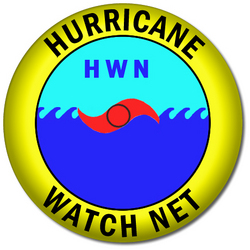 By midweek, however, Gonzalo ballooned into a Category 4 hurricane with Bermuda in its sights, and the Hurricane Watch Net had to recalibrate its plans. The storm was forecast to reach Bermuda on Friday, and if it tracks a bit more to the east, it could make direct landfall on the island.
By midweek, however, Gonzalo ballooned into a Category 4 hurricane with Bermuda in its sights, and the Hurricane Watch Net had to recalibrate its plans. The storm was forecast to reach Bermuda on Friday, and if it tracks a bit more to the east, it could make direct landfall on the island.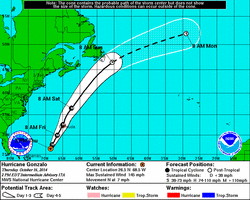
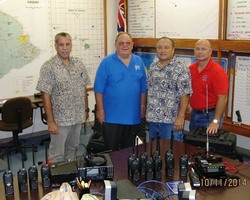
 Prompting the policy update is the 2012 federal law "Moving Ahead for Progress in the 21st Century" or MAP-21, which requires states to enact and enforce statutes that prohibit "texting through a personal wireless communications device while driving" in order to qualify for federal grants to support a state's program. The League "encourages the use of the language in MAP-21 in state statutes and municipal ordinances dealing with mobile telephone and mobile text-messaging limitations," the updated policy states.
Prompting the policy update is the 2012 federal law "Moving Ahead for Progress in the 21st Century" or MAP-21, which requires states to enact and enforce statutes that prohibit "texting through a personal wireless communications device while driving" in order to qualify for federal grants to support a state's program. The League "encourages the use of the language in MAP-21 in state statutes and municipal ordinances dealing with mobile telephone and mobile text-messaging limitations," the updated policy states.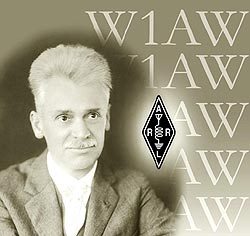 The
The 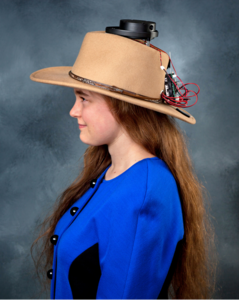
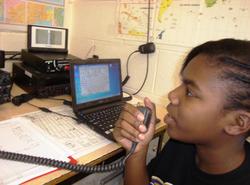
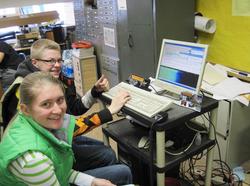
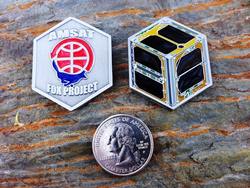 "This challenge coin is shaped as an isometric view of a Fox-1 CubeSat, complete with details such as the stowed UHF antenna, solar cells, and camera lens viewport," AMSAT's Drew Glassbrenner, KO4MA, said in making the announcement. The coin is 3 mm thick brass and plated with antique silver and finished in bright enamel. The reverse side displays the AMSAT Fox logo. The coins were scheduled for delivery prior to the just-concluded 2014 AMSAT Space Symposium. They also will be made available upon request to qualifying donors who contributed since the Fox-1C announcement on July 18.
"This challenge coin is shaped as an isometric view of a Fox-1 CubeSat, complete with details such as the stowed UHF antenna, solar cells, and camera lens viewport," AMSAT's Drew Glassbrenner, KO4MA, said in making the announcement. The coin is 3 mm thick brass and plated with antique silver and finished in bright enamel. The reverse side displays the AMSAT Fox logo. The coins were scheduled for delivery prior to the just-concluded 2014 AMSAT Space Symposium. They also will be made available upon request to qualifying donors who contributed since the Fox-1C announcement on July 18.
 "A growing number of administrations are now permitting amateur operation in all or parts of the 70 MHz, and it is proposed that this should be reflected appropriately in the ECA," the proposal from Bulgaria, Estonia, Finland, Iceland, Ireland, and IARU Region 1 said.
"A growing number of administrations are now permitting amateur operation in all or parts of the 70 MHz, and it is proposed that this should be reflected appropriately in the ECA," the proposal from Bulgaria, Estonia, Finland, Iceland, Ireland, and IARU Region 1 said.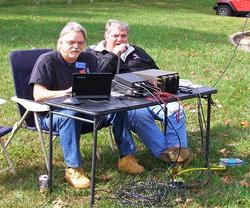
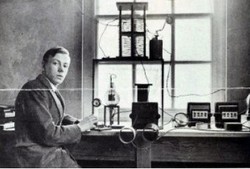
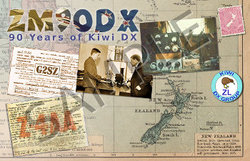
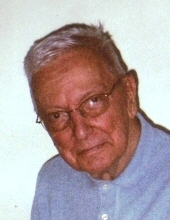
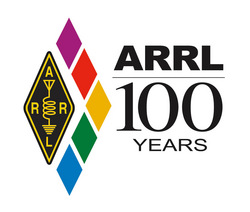 The first World Radiosport Team Championship was held in Seattle in 1990, as part of the International Goodwill Exchange Event.
The first World Radiosport Team Championship was held in Seattle in 1990, as part of the International Goodwill Exchange Event.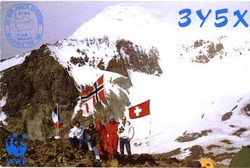
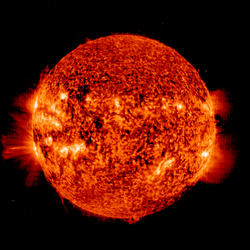 The average planetary A index rose from 6.4 to 10.4. The most unsettled geomagnetic day was Tuesday, October 14, when the planetary A index was 18, and the planetary K index reached 5 for 9 hours overnight. In Alaska, the college A index reached 21, but this was because the same 9-hour period of activity all occurred by the end of the day (UTC), while the planetary K index reached 5 for 6 hours as Tuesday ended and 3 hours as Wednesday began.
The average planetary A index rose from 6.4 to 10.4. The most unsettled geomagnetic day was Tuesday, October 14, when the planetary A index was 18, and the planetary K index reached 5 for 9 hours overnight. In Alaska, the college A index reached 21, but this was because the same 9-hour period of activity all occurred by the end of the day (UTC), while the planetary K index reached 5 for 6 hours as Tuesday ended and 3 hours as Wednesday began.







